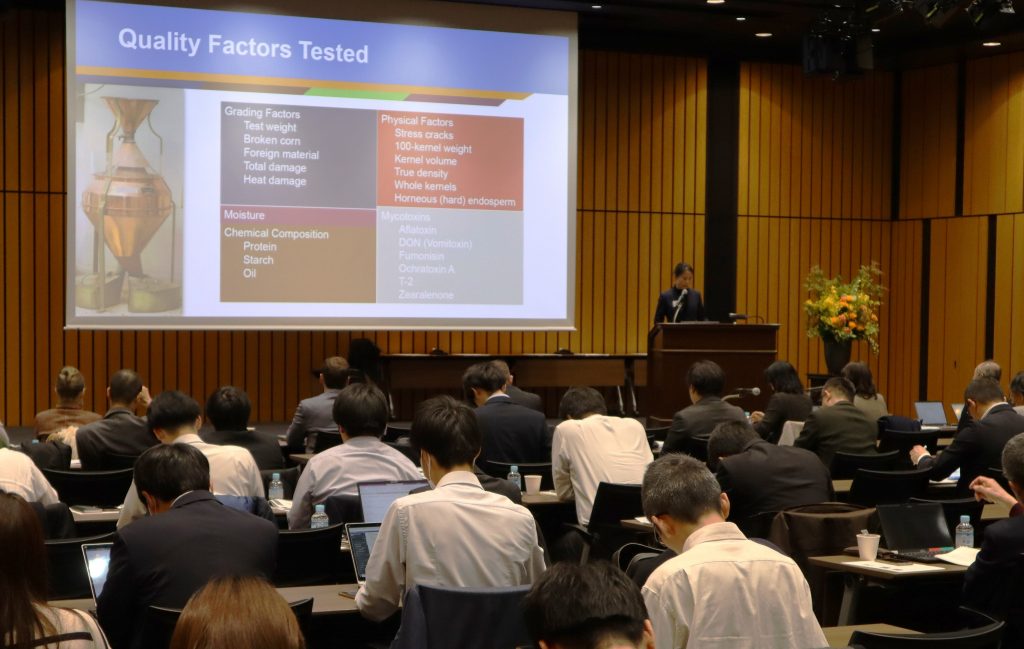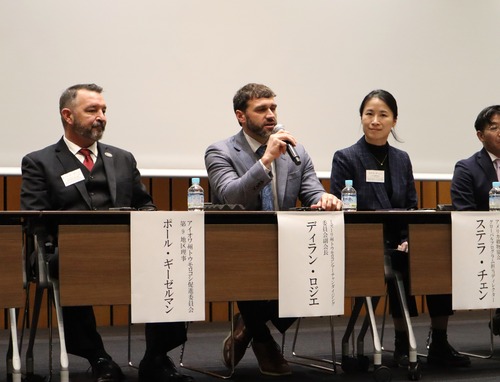The U.S. Grains Council (USGC) recently held a rollout event in Tokyo to present the results of the Council’s 2024/2025 Corn Harvest Quality Report to international buyers.
USGC Director of Global Programs Administration Stella Qian, Iowa Corn Promotion Board Director Paul Gieselman and Missouri Corn Merchandising Council Vice Chairman Dylan Rosier traveled for the event to speak to attendees and answer questions about the quality, applications and availability of the crop.
“Customers around the world look forward to the Council’s various annual crop quality reports because they trust the studies’ data and know it helps them make informed purchases over the next year,” Rosier said. “Having Council delegates like Dylan and Paul join these programs is always significant to Japanese buyers too because they can build a personal connection with the people that grow their food.”
The 2024/2025 Corn Harvest Quality Report is the 14th annual study sponsored by the Council and shows U.S. corn experienced limited stress throughout its development due to favorable growing season conditions. Those factors contributed to the highest projected average yield on record and promoted good grain quality and relatively warm, dry conditions during September and October permitted an effective dry-down and timely harvest.
The average aggregate quality of the representative samples tested was better than the grade factor requirements for U.S. No. 1 grade. The report also showed 89.2% of the samples met the grade factor requirements for U.S. No. 1 grade, and 96.2% met the grade factor requirements for U.S. No. 2.
Other topics during the rollout event included analysis of demand in other markets, international trade policy updates and the sustainability benefits of U.S. corn.
Outside the conference, the Council’s delegation met with U.S. Department of Agriculture Foreign Agricultural Service (USDA FAS) staff based in Japan, the Japanese Ministry of Agriculture, Forestry and Fisheries and the Japanese Ministry of Economy, Trade and Industry. The group also toured a local wet milling facility to learn about the feed requirements and logistics involved in the Japanese market.
“The additional meetings we held with FAS staff and Japanese government officials were highly productive and centered on anticipated changes to Japanese food security laws; Japan’s intention to blend gasoline with 10 percent ethanol (E10) by 2030 and E20 by 2040; and potential demand resulting from the development of sustainable aviation fuel (SAF) technologies in the near future,” Gieselman said.
“Japan remains a premier market for U.S. corn exports and the Council is determined to not only defend it from corn of competing origins but help grow and enhance demand to increase total U.S. exports to Japan.”
Read the Council’s 2024/2025 Corn Harvest Quality Report here.
About The U.S. Grains Council
The U.S. Grains Council develops export markets for U.S. barley, corn, sorghum and related products including distiller’s dried grains with solubles (DDGS) and ethanol. With full-time presence in 28 locations, the Council operates programs in more than 50 countries and the European Union. The Council believes exports are vital to global economic development and to U.S. agriculture’s profitability. Detailed information about the Council and its programs is online at www.grains.org.


